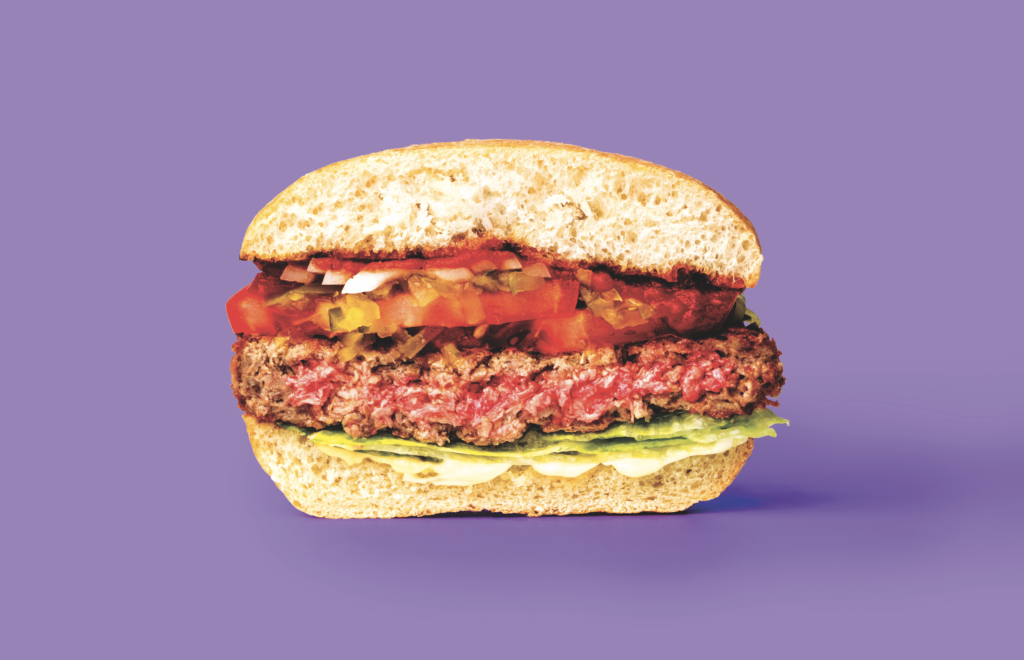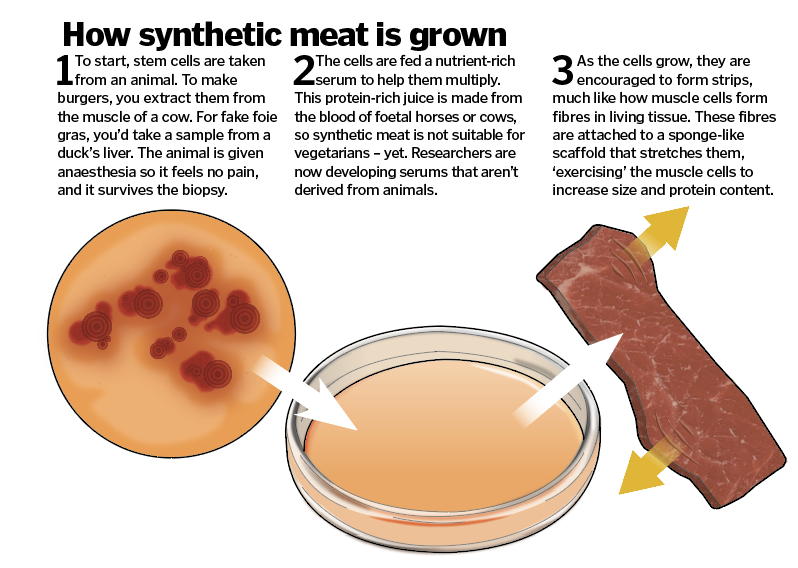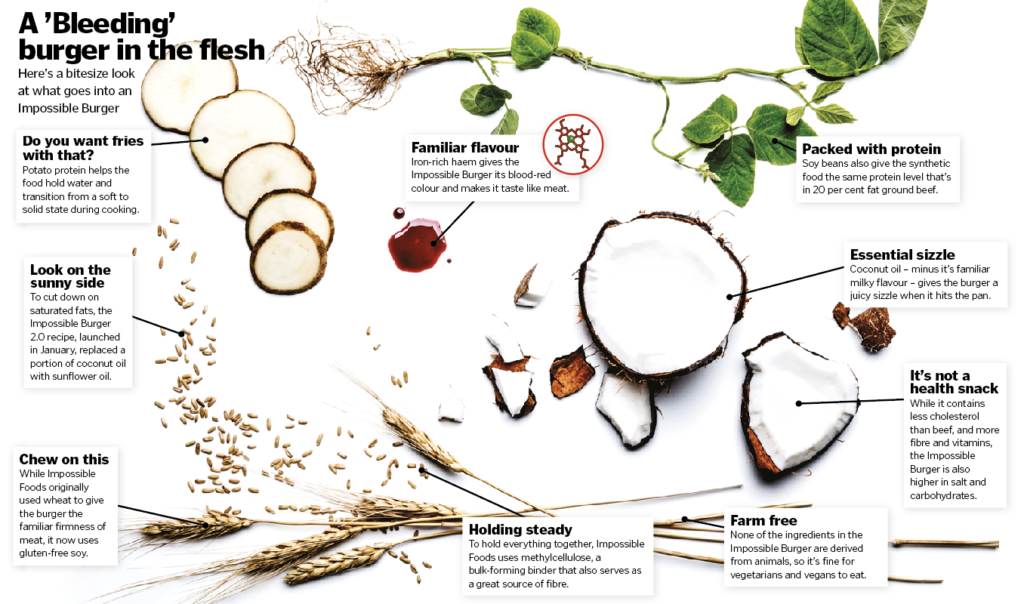Food Science: How is fake meat made?
by Scott Dutfield · 25/01/2020

Image credit: Impossible Foods
From veggie burgers that bleed to lab-grown steaks, the future of food is an imitation meat arms race
Burger King announced in April that it’s rolling out the Impossible Whopper to all of its 7,300 restaurants in the US. This vegan burger isn’t your normal black bean meat substitute. What makes it seemingly ‘impossible’ is that its looks, feels and tastes like ground beef – but is entirely made from plants.
Engineered by Silicon Valley-based Impossible Foods, this fake meat makes clever use of vegetable fats and proteins so that it even bleeds and sizzles when you cook it. And it’s becoming big business. As well as Burger King, Impossible Foods is partnering with other fast food chains. Meanwhile its rival, Beyond Meat – which also makes fake sausages – is signing up supermarkets on both sides of the Atlantic.
However, while plant-based burgers become more meat-like, the bleeding-edge of biotech research is redefining what meat is entirely. In 2013 the Dutch scientist Mark Post served up a lab-grown hamburger. No animal had to die to make it – instead lab technicians grew it in a vat from a handful of cells in just three months. The downside was that it cost about £250,000.
Six years later, so-called ‘cultured meat’ startups have slashed that price by 99 per cent. And they’ve diversified, growing beef, chicken, turkey and tuna. Milk made without cows and eggs without hens are also in the works. It’s expected that affordable animal-free meat will arrive from 2020.
The driving force for both plant-based burgers and cultured meat is a need to feed an exploding global population while having less of an environmental impact. Animal-based meats, as we need to start calling them, require unfathomable amounts of food and water and take up vast stretches of land. And all the while they produce methane emissions, contributing to global warming. Just possibly, fake meat is a real solution.

Image credit: Art Agency
What makes vegan burgers bleed?
As gross as it sounds, biting into a plant-based patty and seeing it run red is what drives many to try fake meat. While Beyond Meat uses beetroot for this effect, Impossible Foods has gone one step further: they use haem. This iron-containing compound is found in both plants and animals. It’s the reason our own blood is red.
Impossible Foods used to harvest haem from soy plant roots. But the eco-conscious company switched to genetically engineered yeast so it didn’t have to intensively farm crops. Containing the soy gene for haem, this yeast is fermented in giant vats. It’s a bit like beer-brewing, but instead of alcohol, it makes this gory secret ingredient.
This article was originally published in How It Works issue 127, written by Jack Parsons
For more science and technology articles, pick up the latest copy of How It Works from all good retailers or from our website now. If you have a tablet or smartphone, you can also download the digital version onto your iOS or Android device. To make sure you never miss an issue of How It Works magazine, subscribe today!





